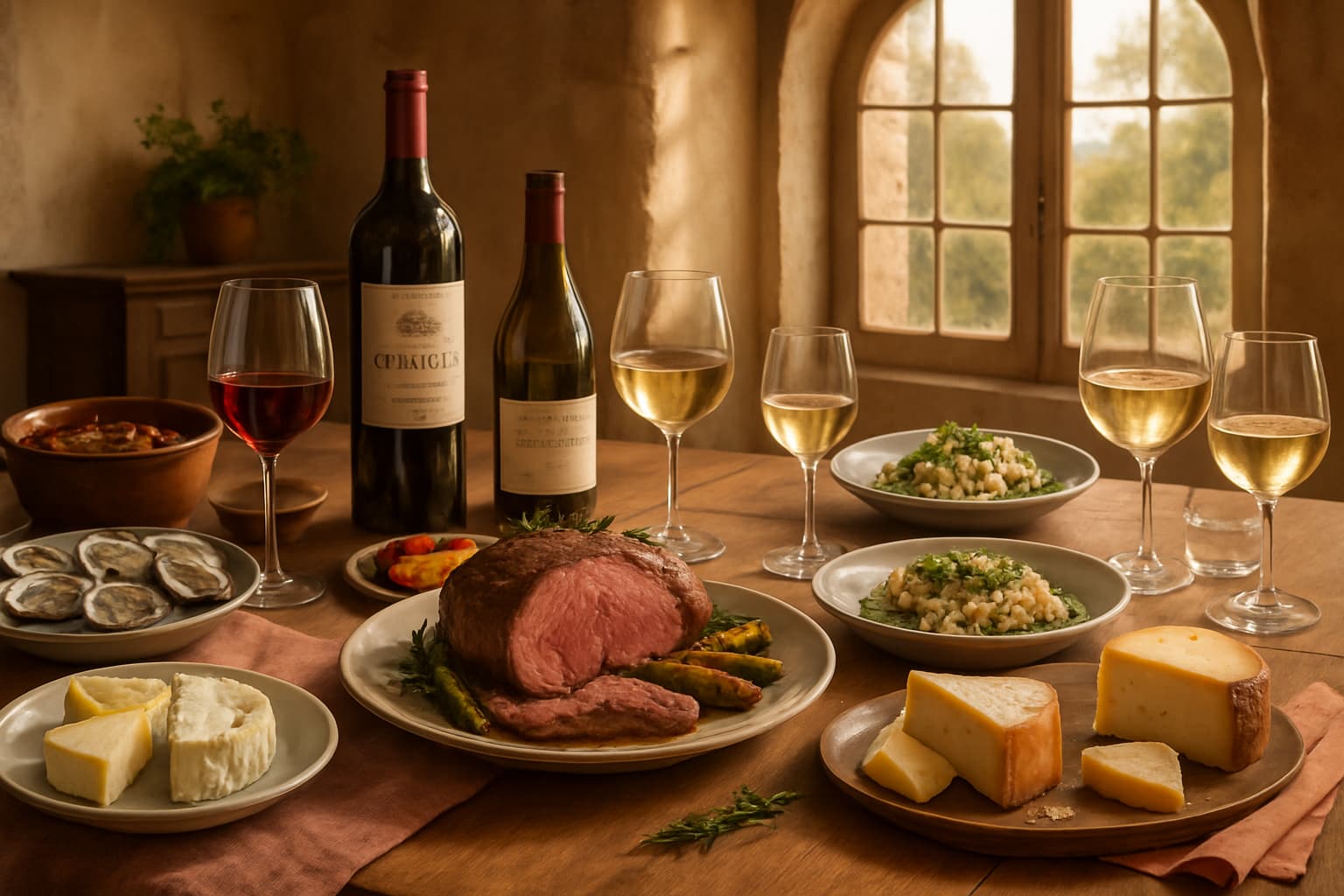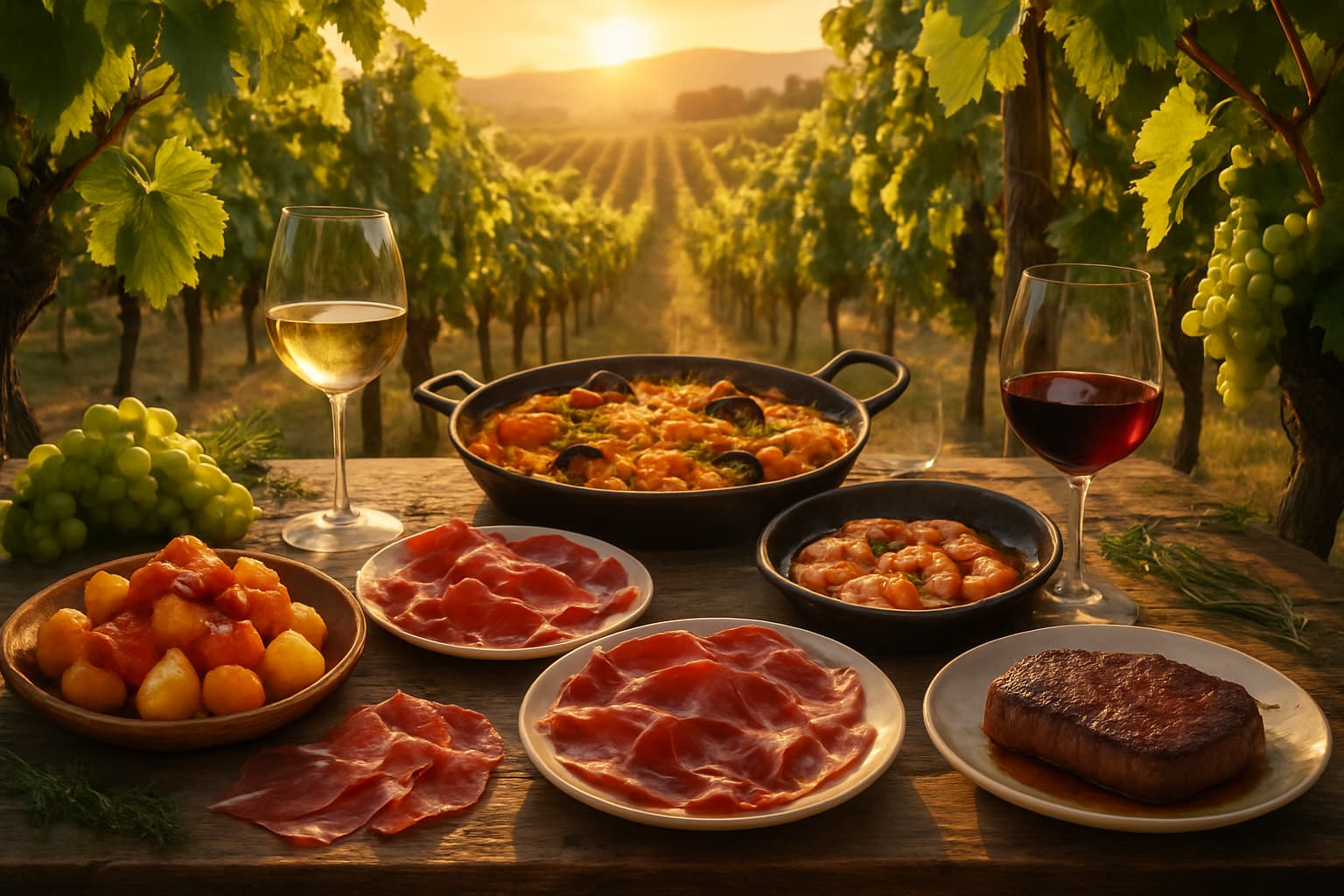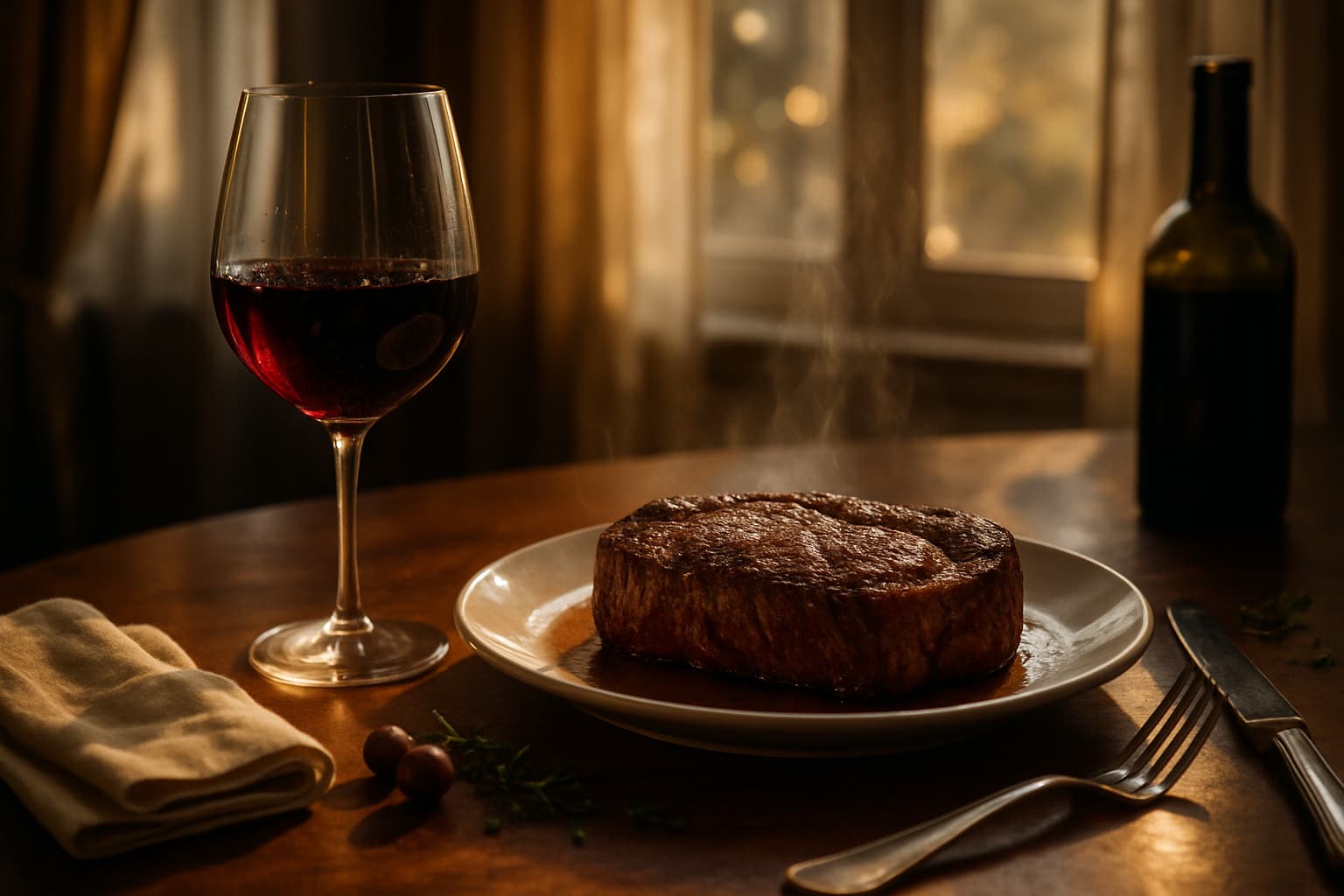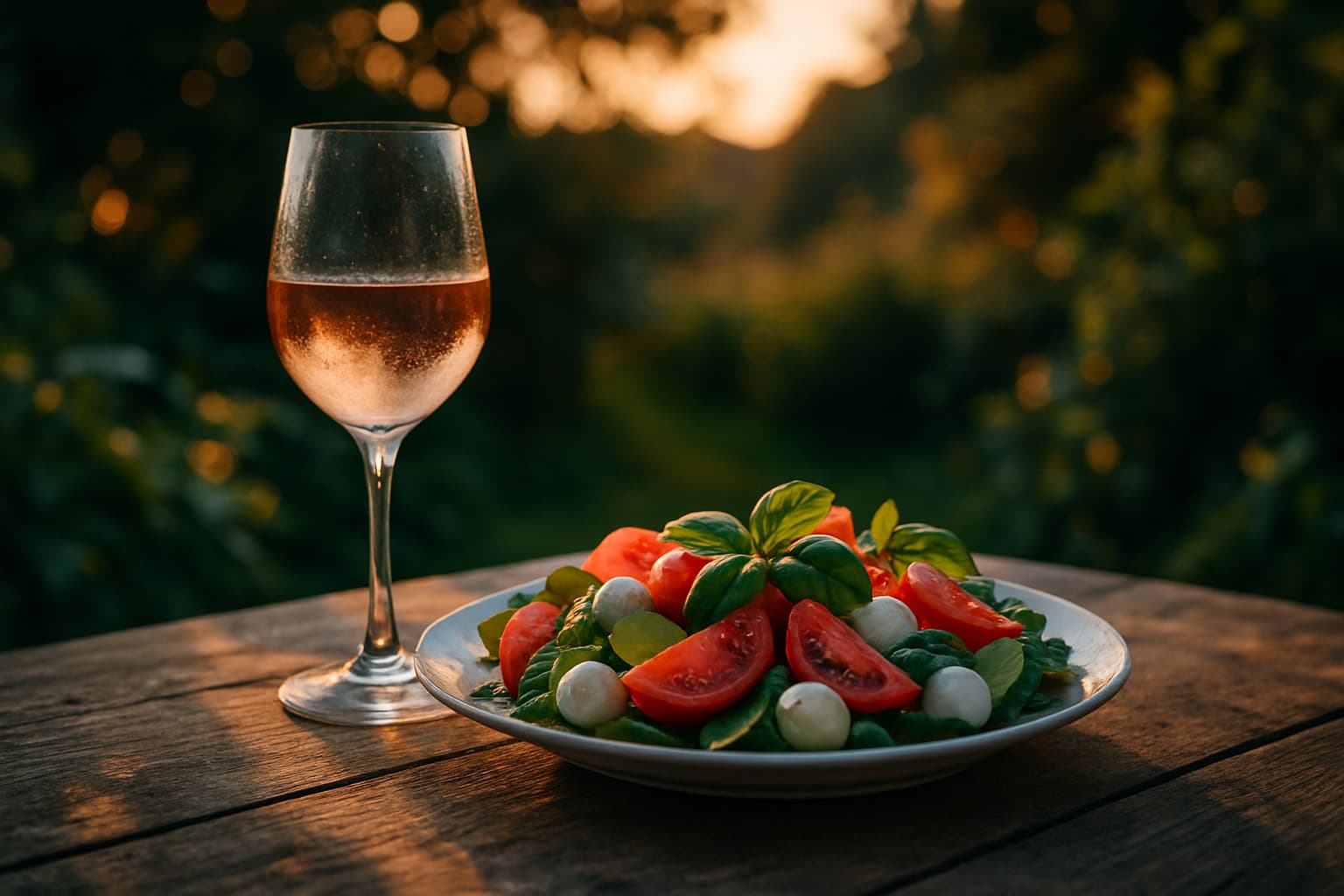

Spanish Wine Pairings: From Tapas to Main Courses
We were somewhere around Barcelona on the edge of a vineyard when the drugs began to take hold. I remember saying something like, "I feel a bit lightheaded, maybe it's the wine," and suddenly there was a terrible roar all around us and the sky was full of what looked like huge bats, all swooping and screeching and diving around the vineyard. Or perhaps it was the Spanish wine, swirling in my glass, promising an adventure through the world of Spanish wine pairings, from humble tapas to grand main courses. Fear and Loathing in the Vineyard, they might call it, but let's dive into this wild ride together.
The Gonzo Guide to Tapas and Spanish Wine
Ah, tapas! Those small plates of culinary delight scattered across Spain, each one an explosion of flavor. And what better way to enjoy them than with a glass of Spanish wine? But which wine, you ask? Let's start with the basics.
For your classic patatas bravas, you'll want a crisp and refreshing white wine. Albariño from Rías Baixas is your ticket to flavor town. Its high acidity and citrus notes cut through the spicy tomato sauce like a hot knife through butter, leaving your taste buds dancing in delight. If you're feeling particularly adventurous, why not add a splash of vermouth? It's the kind of thing that might make you question reality, but in the best way possible.
Moving on to the jamón ibérico, a wine with a bit more body is in order. A glass of Tempranillo from Rioja will do the trick. Its rich, dark fruit flavors and smooth tannins pair beautifully with the salty, nutty goodness of the ham. It's like a symphony in your mouth, with each note perfectly balanced and harmonizing with the next.
And let's not forget about the gambas al ajillo—those sizzling shrimp in garlic and chili oil. Here, you'll want something with a bit of spice to match. A glass of Garnacha from Priorat, with its bold, peppery notes, will make you feel like you're riding a wave of flavor straight into the sunset. Just be careful not to get too carried away—the last thing you need is to end up in a ditch somewhere, wondering where it all went wrong.
From Tapas to Main Courses: A Journey Through Spanish Wine
Now that we've covered the tapas, it's time to move on to the main event. And what better way to start than with a hearty paella? This iconic Spanish dish, with its saffron-infused rice and array of seafood and meats, demands a wine that can stand up to its bold flavors.
Enter the mighty Monastrell from Jumilla. Its deep, dark fruit flavors and robust structure make it the perfect match for the rich, savory goodness of paella. It's like a bullfight in your mouth, with each sip a thrilling dance of flavors and textures. Just be sure to keep your wits about you—the last thing you need is to end up in a bullring, wondering how you got there.
For those who prefer their meat a bit more straightforward, a juicy steak is the way to go. And what better wine to pair with it than a bold and powerful Cabernet Sauvignon from Ribera del Duero? Its intense, dark fruit flavors and firm tannins are the perfect match for the rich, savory goodness of a perfectly cooked steak. It's like a primal scream of flavor, with each sip a reminder of the raw power of nature.
And let's not forget about the vegetarians in the room. A hearty vegetable stew, with its array of flavors and textures, demands a wine that can stand up to its complexity. A glass of Mencía from Bierzo, with its bright, fruity notes and lively acidity, is the perfect match. It's like a wild ride through the Spanish countryside, with each sip a new adventure waiting to be discovered.
The Philosophy of Spanish Wine Pairing
But what is it about Spanish wine that makes it so perfectly suited to the country's cuisine? It's a question that has puzzled philosophers and wine enthusiasts alike for centuries. Some say it's the terroir—the unique combination of soil, climate, and geography that gives Spanish wines their distinctive character. Others point to the country's rich culinary heritage, with its emphasis on fresh, seasonal ingredients and bold, robust flavors.
But I say it's something more. It's the spirit of adventure, the willingness to take risks and push boundaries, that defines Spanish wine and cuisine. It's the same spirit that drove explorers like Columbus and Magellan to set sail into the unknown, seeking new worlds and new experiences. It's the same spirit that drives us to seek out new flavors and new pairings, to push the boundaries of what's possible and to create something truly extraordinary.
So the next time you sit down to a meal of Spanish cuisine, remember the philosophy behind it. Remember the spirit of adventure that drives us to seek out new flavors and new experiences. And remember the power of Spanish wine to transport us to new worlds and new adventures, one sip at a time.
Conclusion: A Wild Ride Through Spanish Wine and Cuisine
And so, our journey through the world of Spanish wine pairings comes to an end. From the humble tapas to the grand main courses, we've explored the bold, robust flavors of Spanish cuisine and the wines that bring them to life. We've delved into the philosophy behind it all, the spirit of adventure that drives us to seek out new flavors and new experiences.
But the journey doesn't have to end here. The world of Spanish wine and cuisine is vast and varied, with new flavors and new pairings waiting to be discovered. So the next time you sit down to a meal, why not take a chance? Try something new, something bold, something daring. You never know where it might take you.
And as for me, I'll be out there on the edge of the vineyard, chasing the bats and the dreams and the flavors that make life worth living. Fear and Loathing in the Vineyard, they might call it, but I say it's just another day in the life of a gonzo wine enthusiast. So here's to Spanish wine, and to the wild ride that comes with it. Salud!
More from Wine and Food Pairing
Master the Language of Wine
Tannins
Tannins are astringent compounds found in wine that contribute to its texture and aging potential, often causing a drying or puckering sensation in the mouth. They are derived from grape skins, seeds, and stems, as well as from oak barrels used during aging.
/ˈtænɪnz/
Malic acid
Malic acid is a naturally occurring organic acid found in grapes that contributes to the tart, green apple-like flavor and crispness in wine. It plays a significant role in the taste and acidity of wine.
/mælɪk ˈæsɪd/
Filtration
Filtration in winemaking is the process of removing solid particles from wine to clarify and stabilize it before bottling, using various types of filters to achieve different levels of clarity and remove unwanted elements like yeast, bacteria, and sediment.
/fɪlˈtreɪʃən/
Oxidation
Oxidation in wine is a chemical reaction between the wine and oxygen that can change its flavor, aroma, and color. This process can be beneficial or detrimental depending on the extent and context of the exposure.
/ˌɒksɪˈdeɪʃən/
Microclimate
Microclimate refers to the unique climate conditions of a small, specific area within a larger region, significantly influencing grapevine growth and the characteristics of the resulting wine.
/ˈmīkrōˌklīmit/
Subscribe to Our Newsletter
Get weekly wine recommendations, vineyard news, and exclusive content delivered to your inbox.

